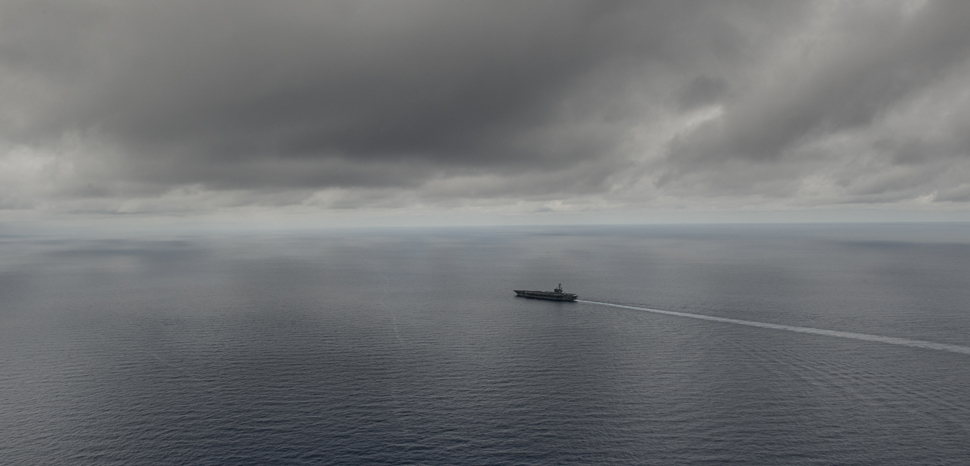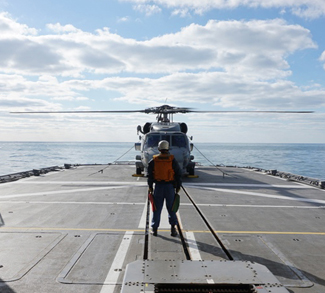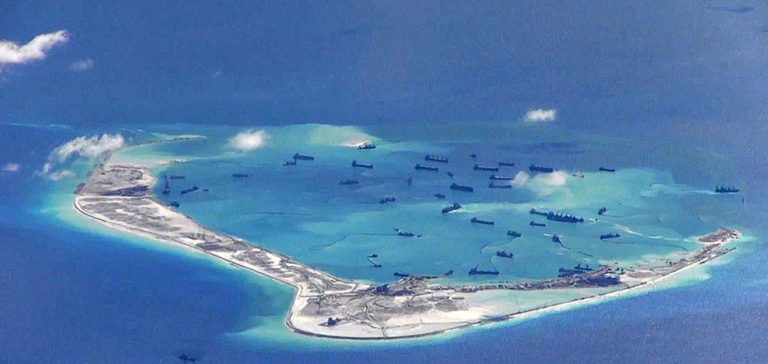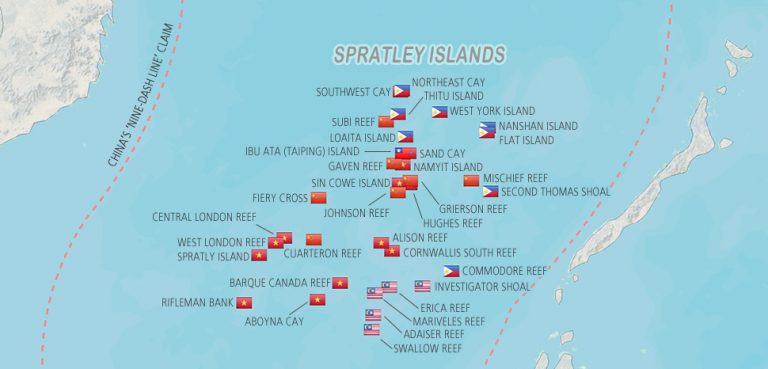The past decade and a half has seen China undergo a modernization of its military, including the People’s Liberation Army Navy (PLAN). This naval modernization, which includes the addition of two aircraft carriers, coupled with China’s seemingly aggressive behavior in the South China Sea, has caused consternation and alarm among some states and analysts that see China’s moves as part of its rise to, if not global predominance, then at least regional hegemon status.
However, both China’s naval modernization as well as its assertiveness over the disputed Senkaku island chain are part a broader maritime strategy, and should be seen within the context of the maritime geopolitics of East Asia. That is, China’s recent maritime moves are a natural outgrowth of the geographic situation China finds itself in, and reflective of its overall naval strategy.
The Maritime Geopolitics of East Asia
Fully ninety percent of the world’s commerce is conducted via maritime routes. A sizable portion of this commerce flows through the East China sea, as China, with one of the world’s largest merchant fleets, boasts some of the world’s busiest ports on is eastern seaboard. Trade is the backbone of China’s still expanding economy, and thus ensuring that the sea lanes in the East China sea are secure, and free of harassment is vital to its economic growth. However, the geography of maritime East Asia complicates China’s foreign relations. To its east China is faced with two nation-state archipelagos, the Philippines with over 7,000 islands in its chain to the southeast, and Japan with over 6,800 islands to its northeast. Together the two island nations create a fence of islands against China’s main access to the oceans, both in the South China sea and the East China sea. This is commonly called the first island chain, and figures prominently in China’s strategic thinking. The PLAN is wary of encirclement by foreign maritime powers using this island chain. In fact, the island chain strategy was one that American strategic planners had envisioned that could be used to encircle the Soviet Union during the Cold War, but now could use it to encircle and contain China.
This fear of encirclement by the U.S., and its allies, mainly Japan, wherein they use strategically placed military bases on these islands, is coupled with the fact that China and Japan have fought a series of wars over the control of the Korean Peninsula and Manchuria. Beginning in 1592 Japan tried to invade Korea but was beaten back by the Ming emperor. In 1894, after the Meiji restoration, a newly assertive Japan tried again, to wrest Korea from China’s control. This time they were more successful, humiliating China by forcing it to cede Taiwan as well.
In 1904 Japan fought Russia for control of Korea, defeating the Russian Black Sea Fleet at the decisive battle of Tsushima. The Japanese had by then developed a significant and formidable naval presence. In 1937 Japan, still expansionist-minded, invaded China proper in an attempt to take Manchuria. The result was a long bloody chapter of World War II, which Japan ultimately lost, although its armies were never forcefully expelled from China.
Five years after World War II ended, the Korean war was fought, this time involving the United States on the Korean peninsula. China became directly involved to prop up the North Korean military. The war ended in a truce, but it marked the fourth time in fifty-six years that China faced an imminent threat on its eastern seaboard by a maritime power. China has been historically vulnerable to invasion on its westward and northern flanks, but has taken great measures to secure its western and northern borders. When the Soviet Union disintegrated, China initiated a series of confidence-building measures with the successor states to the USSR. These confidence-building measures eventually paved the way for the creation of the Shanghai Cooperation Organization (SCO), China’s current main security vehicle.
Modernization Program
After the end of the Cold War, as its economy grew, China embarked on a naval modernization program to offset what it sees as a vulnerability to invasion in the East China sea. This was part of a wider trend to modernize all branches of the Chinese Peoples’ Liberation Army. The naval component of the PLA has developed a robust submarine deterrent, as well as an array of littoral defense ships. In total the PLAN has 60 submarines, but only four of these are strategic ballistic missile carrying subs, the other 56 are tactical. China also has 87 surface ships, including one aircraft carrier, 27 destroyers, and 59 frigates. This is an increase from 2005 when it had 63 surface vessels. China also has 205 patrol and coastal ships, which amount to the largest littoral fleet in East Asia.
China has also recently developed its first domestically built aircraft carrier, the Shandong, which is now undergoing sea trials. The Shandong is China’s second aircraft carrier overall, after the refitted Varyag, bought from Ukraine, was converted into the Liaoning. China now joins the United States as the only countries that currently have two or more aircraft carriers. These carriers are designed as a deterrent to encirclement, rather than power projection, the way the United States uses its carriers. China’s carrier program is not an attempt to build a blue water navy for the purposes of expansion and hegemony, but rather for coastal defense. For China, its modernization program is an outgrowth of its primary strategy of jinhai fangyu, coastal defense. It still retains the most dominant littoral fleet in East Asia. Instead of reducing this littoral capacity, China’s new surface ships, including its aircraft carriers, enhances it.
In other words, China’s naval modernization, including its new aircraft carriers are designed to prevent a breakthrough in the first island chain by the United States, Japan, and to a lesser extent, the Philippines. China has aggressively challenged Japan’s claim of sovereignty over the Senkaku/Diaoyu islands in the East China sea to prevent such a breakout.
Naval Strategy
China’s carriers are not, despite worries from the United States to the contrary, meant to cement a wide ranging blue water navy. Instead, they will complement China’s already formidable brown water naval capacity. Likewise, the PLAN’s submarine force has been upgraded as part of its broader anti-access area denial strategy, so that it will assist in preventing a breakthrough in the first island chain by the United States or Japan. The preeminent thought for Chinese naval strategists, conscious of their country’s history, is to defend China’s long eastern seaboard. The PLAN must account for at least four hostile offshore states – Japan, Taiwan, the Philippines, and the United States.
The U.S. and Japan present the most challenges to China, thus its modernization program has mirrored American naval strengths. This is not done as an attempt to push the United States out of the region, (although this may be an ideal goal, even the most optimistic Chinese naval theorist cannot see it as realistic), but to deter against any potential U.S. action to push through the island chain. For that reason, American naval strategists and planners should not expect aggressive Chinese naval actions beyond its inner sea region. Any Chinese aggression in the East China and South China seas will likely match U.S. action in those sea basins, if they are perceived as threatening to the Chinese mainland, (i.e. establishing bases in the Senkaku or Parcel island chains, or further arming Taiwan or the Philippines).
As for Japan, aside from its alliance with the United States, Japan’s current plan to change Article 9 of its pacifist constitution, in order to present a more aggressive military posture, is also a concern for China. Any further action that Japan takes, in terms of upgrading its own military equipment or an increased presence in the East China sea, will likely result in an equal or greater response from China. The PRC will not allow a re-emergence of Japan as a significant maritime power in the region, and the United States may find that Japanese assertiveness may spark an arms race in the East China sea basin. For now, the PRC is content with deterrence and keeping its first island chain from being penetrated by foreign naval forces. Its modernization program is designed for this. China tolerates a large U.S. military presence in Okinawa only because it has little recourse to remove it, but further encroachment in the island chain may bring a stronger Chinese response.
China views its path to great power status, and indeed its path for regime survival, through maritime trade, the backbone of its economy. However, China also is mindful of its complex history with U.S. allies Japan and South Korea in the East China sea basin, seeing what it deems to be an imbalance of power on its eastern seaboard. Through the sea China is vulnerable to invasion. China’s naval modernization, including the development of its first two aircraft carriers, is designed to restore a greater sense of equilibrium to the East China sea basin, and thus prevent a breakthrough through the first island chain by a hostile maritime power.
The views expressed in this article belongs to the author alone and does not necessarily reflect those of any institutions with which the author is associated with or Geopoliticalmonitor.com.




